What are the two major development directions for civil drones in the future?
Can a fuel-powered drone solve the bottleneck of load and endurance?
Is there a drone that flies its wings like a bird?
What new opportunities have the policy supervision brought to the drone market?
[text]Since 2015, the global drone industry has experienced a blowout, which has attracted many companies, and various new product launches and financing news have continued. However, since the second half of 2016, the market competition has become more and more fierce, and the companies that have been full of blood and blood have encountered difficulties. In the United States, the drone boss 3DRoboTIcs completely withdrew from the drone hardware market, and star companies such as GoPro, Lily, and Parrot also smashed the drone market. In China, companies such as Yihang and Zero have experienced large layoffs at the end of last year. At the beginning of 2017, Xi'an drone enterprise Skye Intelligence was bankrupt due to the break of the capital chain...
In addition to the harsh and disorderly market competition, the repeated unmanned aerial drones in China have also attracted the attention of the regulatory authorities. The previous legal vacuum zone has gradually begun to have strict regulations. Various phenomena seem to indicate the current drone market. After the low tide period after the disorderly competition, where is the future industrial path? On June 21st, the well-known industrial incubator, ACT Lab, combined with the three aviation industry technology research institutes, Tengyun Aviation Technology, Tianying Intelligent and the authority of the Shenzhen Key Laboratory of Drones Experts held the “Opportunities and Challenges Behind the Drones†industry salon to discuss the future development of drones. This salon is also part of the ACT Lab brand activity ACT Talk series, attracting many drone industry followers. And smart hardware developers are involved.
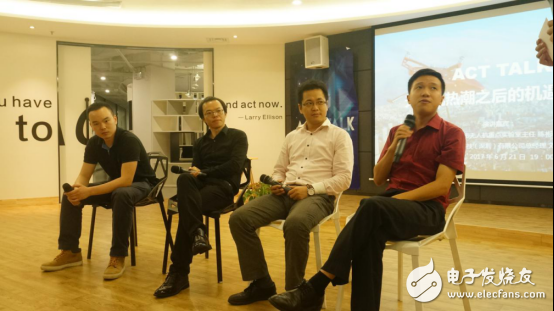
Photo: ACT Talk round table guests (from left to right): Tianying Intelligent CEO Liu Chuhao, Shenzhen UAV Key Laboratory Director Lian Bin, Sanhang Industrial Technology Research Institute Operation Director Ouyang Mengying, Tengyun Aviation Technology General Manager Liu Junhui
1. Industrialization and entertainment will be the two major development directions of civilian drones.Lian Bin, director of the Shenzhen UAV Key Laboratory, pointed out that at the current stage, civilian drones have huge market potential in two directions: one is industrial-grade or commercial-use drones, and the other is entertainment-oriented consumer-grade Drone.
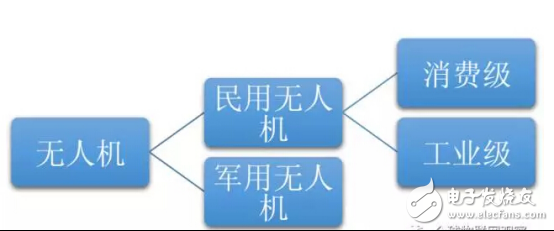
In the consumer sector, drones below 500 grams will become the future of personal consumption. Nowadays, various manufacturers have made consumer-grade drones smaller and smaller, including Dajiang, which also has the latest handheld drones. At the same time, the degree of intelligence of the drone will continue to increase. At present, gesture control has been realized, and even the idea control can be realized in the future.
As far as industrial applications are concerned, it is natural for drones to go to industrial and commercial applications. Because when drones are researched, their work is characterized by dirty, dangerous and boring working conditions. This aspect has a natural advantage. At the same time, there are huge demand for drones in the fields of electric power inspection, agriculture, industry, surveying and mapping, and police. Therefore, since the boom of consumer-grade drones in 2015, many companies have turned to industrial applications, which will also Become an industry trend.
In addition, there are huge market opportunities for drone performances in commercial performances. In artistic performances, the unique three-dimensional maneuverability of drones makes it a carrier of a new form of performance, transforming more novel visual ideas into powerful tools for reality.

Photo: Intel drone light show, with 500 drones in the night sky to form a huge Intel logo, the scene is very shocking.
At present, there are not many teams entering the field of drone performance in China, and one of the teams of ACT Lab's resident team is one of them. Tianying Intelligent focuses on the formation of drones and has deep technical accumulation in aircraft integrated navigation and networking communication.
Liu Chuhao, CEO of Tianying Intelligent, studied the robot cluster control algorithm when he was studying in the UK. After returning to China, he used this technology in the formation control of the drone and joined the ACT Lab to form his own team. He said that the current drone show market has only just begun, but there are strong demand in the four areas of theme parks, roving exhibitions, popular science projects, and commercial performances. The demand for drone performance services received by their teams is very high. A large part of the event marketing, such as performances at various ceremonies, spelling out corporate LOGOs in the air. However, the drone performance is still in the early stage, and many aspects are still immature. In the future, more consideration will be given to how to combine the drone with other performance elements, giving full play to the potential and advantages of the drone in the performance, while integrating into the art. Performance elements, to maximize the novelty brought by it, this is the future development direction of the drone performance team.
Second, fuel-based and bionic flapping will become a hotspot for drone researchWith the diversification of industrial application requirements, industrial-grade drones will also become more heavy-duty, with more complex tools to complete complex tasks. Most of the current commonly used drones are battery-powered, because the electric drone is relatively simple, easy to operate, small in size, and relatively inexpensive, but in the industrial field, the load and battery life will become its bottleneck.
For example, in the field of agricultural plant protection, electric-powered drones can only carry 10-15 liters of pesticides at most, and the life time is often only 10 minutes. If the farmland is large, basically the drone will not be discharged after it has been sprayed. It is solved by multiple spraying, which is also a bottleneck in the industry. Therefore, in the field of agricultural drones, several domestic starters have begun to make oil-powered multi-rotor drones with a load of 30-50 kg and a battery life of 1-2 hours, which can greatly improve work efficiency. Therefore, in the next few years, a large-scale, long-time fuel drone will be one of the research hotspots.
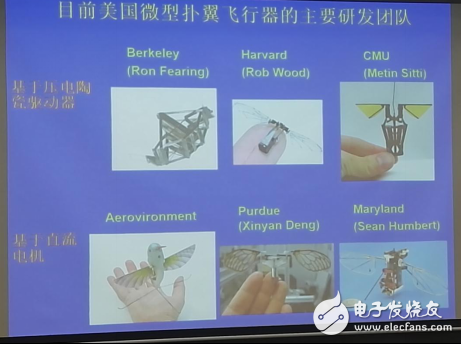
Another research hotspot worthy of attention is the bionic flapping drone. UAVs can be divided into fixed-wing, multi-rotor and flapping wings according to flight principle. At present, fixed-wing and multi-rotor are already in production, but there are two problems in miniaturization and miniaturization. First, battery life and efficiency are very high. It is difficult to improve; second, the wind resistance is poor, and the wind may be out of control. The advantage of the bionic flapping drone is that it can be small, even the size of the insect, while it is more efficient, wind-resistant and better, and can do very low-speed flexible flight, which will lead to more applications. direction. Therefore, many research institutions and teams at home and abroad are working on this aspect of research.
Third, the market opportunities under the drone supervision reformAccording to statistics, in 2017, the number of Chinese drones reached 500,000, of which more than 80,000 were in Shenzhen. If such a large number of drones cannot be effectively supervised, it is likely to cause some serious consequences in the future. The drones frequently reported by the media in the airport airspace in the past have also attracted the attention of the government regulatory authorities.
According to Liu Junhui, general manager of Tengyun Aviation Technology, from June 1, 2017, China will officially register real-name civil drones with a quality of more than 250 grams. At the same time, the civil aviation department is actively establishing a real-time registration data sharing and inquiry system for drones to realize real-time cross-linking with the drone operation platform.
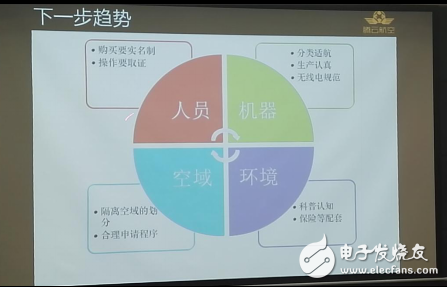
In the future, the civil aviation department will further clarify the division of isolated airspace and establish a reasonable flight application procedure, and the drone products will be further standardized. With the strengthening of the regulatory system, what opportunities exist in the drone market?
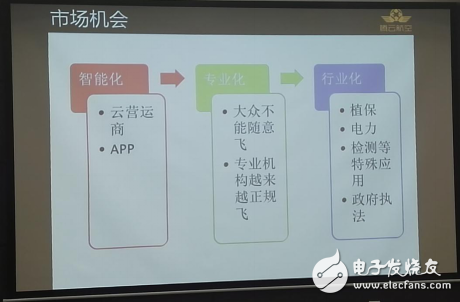
At the same time, Liu Junhui, who is also a special researcher at the Institute of Policy and Regulation of the Civil Aviation University of China, believes that the future drone market will not shrink as a result, but presents three new opportunities:
First, the drone is intelligent. In the future, for better control, the corresponding cloud platform and APP will inevitably need to implement various functions. At the same time, the regulatory agencies also need a unified platform to supervise the drones. There are great market opportunities here.
The second is specialization. According to the regulations, the medium and long-term trend in the future is that the general public cannot operate drones at will, and must obtain relevant qualification certification. That is to say, there is a large market in the field of UAV flying hand training, and future professional drones. The institution will also be more fragrant.
The third is industrialization. UAVs will be used in many industrial applications, such as plant protection, power inspection and other fields. "Now the UAV industry is temporarily at a low ebb, but with the development of the industry, but after 2020, especially after the national airspace reform, it will usher in a new climax. And deepen the three directions of enterprises and entrepreneurs Will also gain huge market opportunities," said Liu Junhui.
Introduction to the event organizer ACT Lab:Advanced CogniTIve Technology Laboratory (ACT Lab) is an international resource platform dedicated to providing entrepreneurial and innovative services for the robotics and artificial intelligence industries. Focusing on the unmanned and unmanned under the new hardware ecosystem In the fields of machine, AR/VR, etc., ACT Lab has mature capital, accelerated incubation services, hardware facilities and other industrial chain service resources. It is the first international entrepreneurial accelerator focusing on robotics and artificial intelligence industry, and is dedicated to excavating on a global scale. And cultivate excellent middle and early entrepreneurial teams in the robotic and artificial intelligence ecosystem, providing product market matching guidance, key technical support, supply chain resource integration, global market channel expansion, and top investment institutions.

UV Machine,UV Curing Machine,UV Film,UV Screen Protector
Shenzhen Jianjiantong Technology Co., Ltd. , https://www.morhoh-sz.com
![<?echo $_SERVER['SERVER_NAME'];?>](/template/twentyseventeen/skin/images/header.jpg)